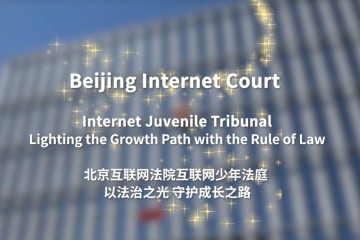Beijing Internet Court lectures on new challenges for judicial protection of copyright
Jiang Ying, vice-president of the Beijing Internet Court and a national trial expert, recently gave a live lecture on challenges to protection of copyright in the digital era.
Jiang said that changes of technology, especially after the application of 4G, have generated changes in the internet industry, so that more people are likely to disseminate works and get involved in copyright infringement.
The internet business models are more diversified, and the number of copyright cases has increased dramatically, presenting new challenges to the application of law, she said.
For example, there have emerged questions like whether short videos, WeChat emoji, or the delay photography and content AI generates should be counted as a work, how to judge the originality of content, and whether creative material is fully protected by traditional copyright law.
Also, developments such as network disk searches, graphic films, and online education have brought problems of copyright protection. New business models such as live streaming and member sharing have caused copyright disputes, said Jiang.
She said that in judicial practice cases involving copyright disputes and anti-unfair competition are common, but the interests protected by the copyright law and the anti-unfair competition law are different.
In theory, where the special law of intellectual property gives exhaustive protection, additional protection can no longer be sought in anti-unfair competition law.
But in practice, when the traditional intellectual property law cannot provide direct remedies, the anti-unfair competition law has a complementary role.
This means that although traditional intellectual property law does not offer sufficient protection, anti-unfair competition law can strengthen the protection of intellectual property.
This online lecture was part of the court's efforts in COVID-19 pandemic prevention and control, and was meant to promote resumption of production by cultural enterprises.

 Judicial White Paper
Judicial White Paper
 Play
Play Play
Play Online Lawsuit Guide
Online Lawsuit Guide Beijing Internet Court Lawsuit Service WeChat Account
Beijing Internet Court Lawsuit Service WeChat Account  Beijing Internet Court WeChat Account
Beijing Internet Court WeChat Account